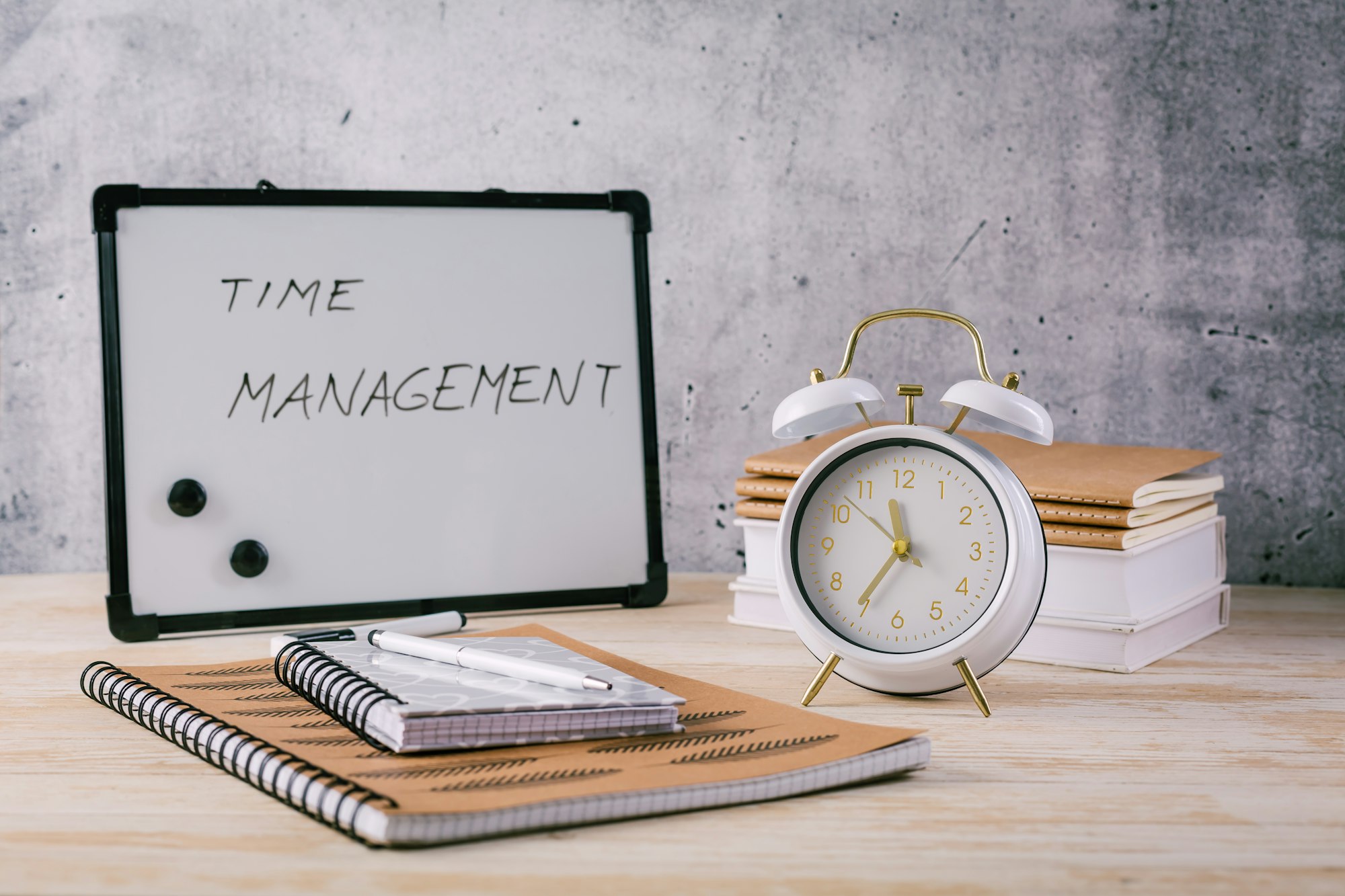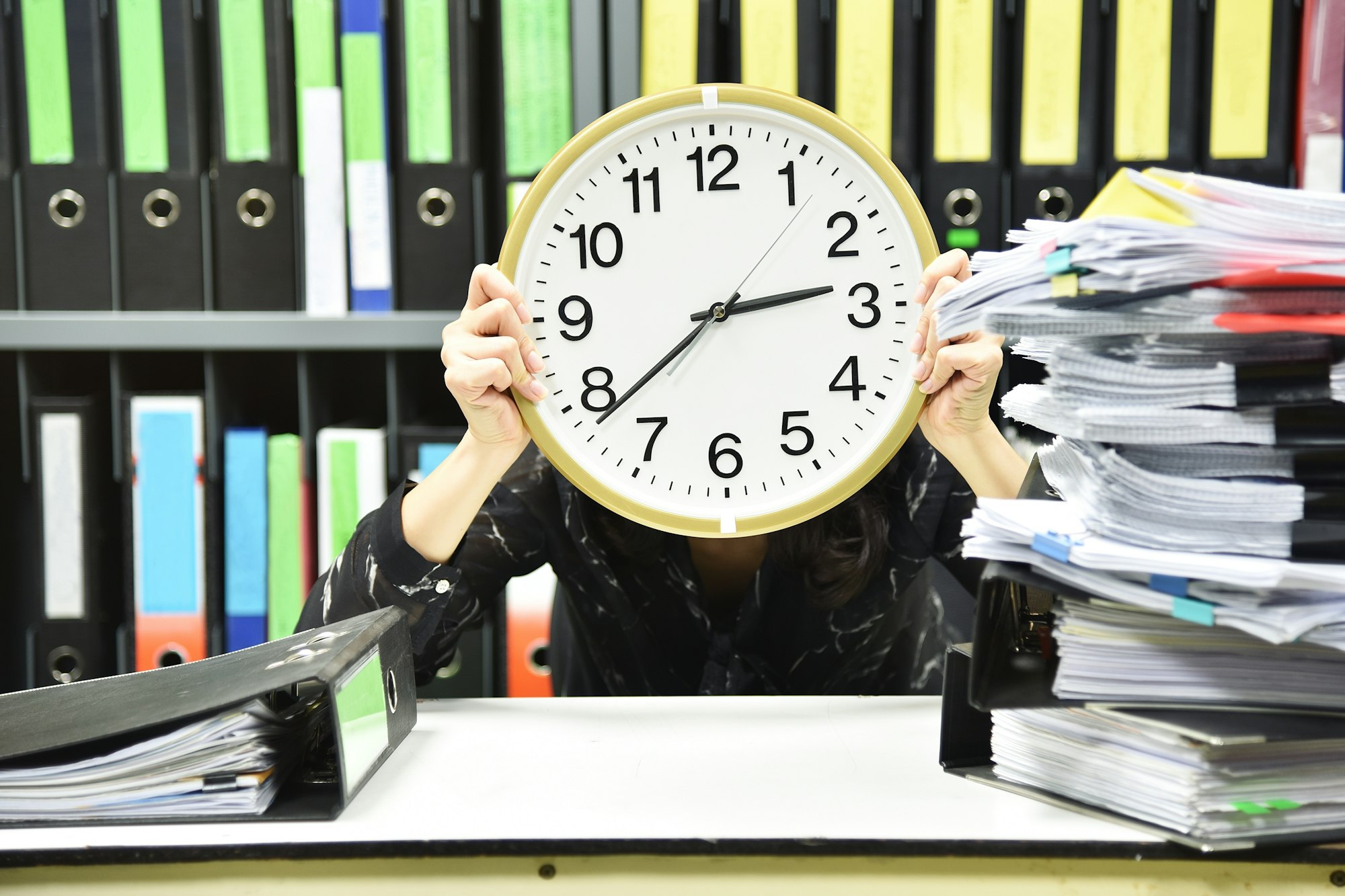
When you’re involved in creative work, managing your time effectively can feel like an elusive goal. You might find yourself wondering where the hours went as you get lost in a sea of ideas, drafts, and revisions.
However, mastering time management is not just about squeezing more work into your day; it’s about making your creative process more efficient and rewarding.
“Time is what we want most, but what we use worst.” – William Penn
By implementing advanced strategies, you can take control of your schedule and maximize your productivity without sacrificing the quality of your explore how you can work.
Let’s balance creativity with time management, ensuring that each moment of your day propels you closer to your goals.

Managing your time effectively can significantly enhance your creative output. One powerful technique involves leveraging energy cycles. Pay attention to the times of day when you feel most energetic and creative.
Schedule your creative work during these peak periods to maximize productivity. For some, mornings might be the golden hours, while for others, late evenings might bring a surge of creativity.
Another effective method is batching similar tasks. This approach minimizes the mental load of switching between different types of work. For example, dedicate specific blocks of time to brainstorming, researching, and writing.
By grouping similar activities together, you create a seamless workflow that helps you maintain focus and foster creative thinking.
Additionally, fixed working hours and spaces can establish a routine that nurtures creativity. Having a designated space and set hours for creative work signals to your brain that it’s time to focus.
This helps reduce procrastination and ensures you have regular, dedicated time for your projects.
Lastly, consider using the Pomodoro Technique. This method, which involves working in short (usually 25, timed intervals minutes) followed by a short break, can prevent burnout and keep your creativity fresh.
It fosters a productive rhythm and allows regular intervals for mental recharge.
Implementing these techniques can create an environment where creativity flourishes, helping you manage your time more effectively and boost your creative output.
To take your productivity to new heights in creative work, it’s crucial to go beyond conventional time management tactics. The advanced strategies below are designed with creative professionals in mind, ensuring that you can manage your time, energy, and inspiration effectively.
One highly effective technique is task batching, where you group similar tasks together and work on them in one go. This minimizes the cognitive load that comes with constantly switching between different types of tasks.
For creative work, consider batching tasks like brainstorming, sketching, or editing in specific time blocks. By focusing intensely on one type of task, you’ll find that your efficiency and creative output improve significantly.
Using time-blocking to allocate specific periods for different activities can transform your workflow. Tools like Google Calendar or Asana can help you set aside uninterrupted time for creative tasks, meetings, and even breaks.
The structured approach ensures that you dedicate enough time to your creative process while still keeping up with essential administrative tasks.
Aligning your tasks with clear, actionable goals can substantially enhance your productivity. Start by setting both short-term and long-term objectives.
This not only gives you a roadmap to follow but also ensures that you stay focused on what truly matters, making significant strides in your creative projects.
There are several tools designed to boost productivity for creative professionals. Applications like Trello and Evernote can help you organize your thoughts, manage projects, and keep track of deadlines efficiently.
Leveraging these tools allows you to streamline your workflow, making it easier to concentrate on producing high-quality, creative work.
Establishing fixed working hours in a dedicated workspace can do wonders for your productivity. This routine helps condition your brain to enter a ‘work mode,’ providing a mental structure that fosters creativity.
Over time, this practice can help you overcome procrastination and create a more disciplined work environment.
Creating shortcuts for repetitive tasks can save valuable time. Whether it’s using email templates, automating social media posts, or employing software to handle mundane tasks, these shortcuts free up more time for creative endeavors.
The key is to identify tasks that can be streamlined and find tools that can assist in automating them.
By implementing these advanced strategies, you can significantly boost your productivity as a creative professional.

Mastering time management as a creative professional isn’t just about meeting deadlines; it’s about finding a rhythm that fosters creativity, productivity, and mental well-being. Here are a few advanced strategies to help you conquer time management and make it work for you:
Understanding the difference between urgent and important tasks can help you focus your energy effectively. Use the Eisenhower Matrix to categorize your tasks. This method allows you to:
This method involves working in focused sprints of 25 minutes, followed by a 5-minute break. After completing four cycles, take a longer break. The Pomodoro Technique helps:
Time management doesn’t mean draining your creativity; it means creating structured opportunities for it to flourish. By implementing these techniques, you can ensure your creative juices flow more freely.

Understanding how you spend your time is vital for optimizing your creative output. A time audit helps you get a clear picture of your daily activities and identify where your time might be slipping away.
By keeping track of each task, no matter how small, you can evaluate your productivity and spot areas for improvement.
Start by tracking your activities in detail for at least a week. You can use traditional methods like a journal or leverage digital tools like Google Calendar or Evernote.
Note down everything, from the main creative projects to smaller tasks like checking emails or brainstorming sessions.
Once you’ve gathered your data, categorize your activities to see how you allocate your time. Look out for time-wasters and note the activities that yield the highest value.
Tools like Trello or Asana can be beneficial for visualizing this information. Aim to identify your peak creative hours—those times when you feel most energetic and productive.
Armed with insights from your time audit, you can now make informed adjustments. Reallocate tasks to your peak hours and minimize or delegate time-draining activities. This way, you can ensure that your best energy is dedicated to your most important work, boosting both productivity and creativity.
Remember, the goal of a time audit isn’t just to manage time but to create a conducive environment for your creativity to thrive. By understanding where your time goes, you can take control and make your schedule work for you.
Remember those moments of sheer joy and creativity you had as a child during playtime? Incorporating such moments into your workday can spark fresh ideas and innovative solutions.
Creative professionals often find themselves bogged down by tight deadlines and intense focus, making it essential to allow room for play.
Why Play is Crucial: Play isn’t just for kids. It’s a powerful tool for adults to relieve stress, enhance creativity, and improve problem-solving skills.
By taking short breaks for playful activities, you stimulate different parts of your brain, providing a much-needed reset. This can help you return to your work with renewed energy and perspective.
Types of Play: Think of activities that bring you genuine joy and engagement. It could be anything from doodling, playing a quick game, building with Lego bricks, or even solving a puzzle. Ensure these activities are light and fun, providing a mental break without overwhelming you.
Scheduling Playtime: How often should you play? Integrate short, intermittent periods of play into your daily routine. For instance, after completing a time-intensive task, reward yourself with a 5-10 minute playful break.
Over time, these brief, enjoyable interludes can significantly enhance your overall productivity and creativity.
By embracing play, you create a balanced workday that not only achieves tasks but also fosters a more vibrant and creative mindset.
Effective delegation is a skill that can significantly enhance your productivity as a creative professional. Delegating tasks allows you to focus on what you do best, channeling your energy into creative pursuits rather than getting bogged down in administrative or repetitive work.
The first step in successful delegation is identifying which tasks can be handed over to someone else. Look for repetitive tasks, administrative work, or anything outside your core skill set.
By freeing yourself from these duties, you can dedicate more time to high-value activities that require your unique creative talents.
Selecting the right individual to delegate to is critical. This person should have the necessary skills, experience, and reliability to handle the task efficiently.
For instance, if you’re delegating social media management, consider someone who is not only tech-savvy but also has a good understanding of your brand voice and audience.
Communicate clearly and provide detailed instructions along with the desired outcome. Be explicit about deadlines and quality expectations.
This minimizes misunderstandings and ensures that the task is completed as per your standards. Using tools like Trello or Asana can help in organizing tasks and improving transparency.
While delegating is not about micromanaging, keeping an eye on progress is essential. Schedule regular check-ins to monitor developments and provide constructive feedback.
This approach not only helps in maintaining quality but also supports the professional growth of the person you’ve delegated tasks to.
Effective delegation can transform your workflow, allowing you to maintain focus on your creative work while ensuring that other essential tasks are managed competently.
By mastering this skill, you’re likely to find that your projects are completed more efficiently and with a higher quality of output.

Mindfulness and meditation are powerful tools that can elevate your creative capabilities. By fostering a state of mental clarity, these practices enable you to tap into your deepest reservoirs of creativity.
Mindfulness is the practice of bringing your full attention to the present moment. It requires noticing your thoughts, feelings, and sensations without judgment.
Engaging in mindfulness allows you to break free from autopilot mode, making you more aware of your creative process and reducing distractions. Imagine the possibilities when you’re fully immersed in your work, unbothered by the chaos around you.
Meditation, on the other hand, involves focused breathing and mental exercises designed to promote relaxation and concentration.
Regular meditation can enhance your creative thinking by improving your ability to focus and sustain attention. It allows you to clear mental clutter, creating room for new ideas and connections to form.
Starting a mindfulness or meditation practice doesn’t have to be complicated. Here’s a simple approach:
By incorporating mindfulness and meditation into your daily routine, you’ll notice a marked improvement in your creative output. You’ll be more present, less stressed, and more open to new ideas—a trifecta for any creative professional.

Effective time management can significantly enhance your creative output by providing structured periods for focused work and relaxation.
When you allocate specific time slots for brainstorming, executing, and reviewing your creative tasks, you introduce a rhythm that can stimulate inspiration and productivity.
Additionally, time management minimizes stress by ensuring deadlines are met without last-minute rushes, allowing your creativity to flow more freely and consistently.
Creative work often faces unique time management challenges such as unpredictable bursts of inspiration, procrastination, and the potential for burnout.
Overcoming these issues requires establishing a flexible routine that accommodates spontaneity while maintaining a structured workflow.
Techniques such as the Pomodoro Technique can help by breaking tasks into manageable intervals, while task batching can group similar tasks to enhance focus and efficiency.
Utilizing time management tools like Trello or Google Calendar also aids in creating visual schedules and reminders, keeping you on track.
Time blocking can be a game-changer for creative professionals. By dividing your day into blocks of dedicated time for specific tasks, you ensure that you give undivided attention to each project.
This method reduces multitasking, which can dilute your creative energy and focus. Furthermore, it allows you to allocate time for both deep work and leisure, creating a balanced schedule that promotes both productivity and creativity.
The result is a more disciplined work process that can lead to higher quality and more consistent creative output.
Staying organized and productive as a creative professional involves a combination of strategies. First, prioritize your tasks by urgency and importance to ensure you’re focusing on what truly matters.
Incorporate tools and technology such as Asana or Evernote to manage your workflow, set reminders, and keep track of progress. Setting clear goals and breaking them into achievable milestones can also provide a roadmap for your projects.
Lastly, consider establishing fixed working hours and a dedicated workspace to separate work from leisure, minimizing distractions and enhancing focus.
To develop a time management plan tailored to your creative needs, start by conducting a time audit to understand how you currently spend your hours. Identify peak periods of creativity and align your most demanding tasks during these times.
Utilize the Pomodoro Technique to break your work into focused intervals with breaks in between. Scheduling regular review sessions can help you adjust your plan based on what works best.
Be realistic about your goals and ensure your plan includes time for rest and recreation, as rejuvenation is crucial for sustained creativity.
Leveraging tools like Trello or Google Calendar can also streamline your planning process, making it easier to visualize and stick to your schedule.
As you navigate the intricate landscape of creative work, mastering advanced time management strategies can enhance both your productivity and creativity.
By incorporating techniques like task batching, time-blocking, and leveraging tools and technology, you can streamline your workflow and reduce unnecessary stress.
Embracing mindfulness and introducing moments of play into your routine not only refreshes your mind but also sparks innovative ideas.
It’s also crucial to recognize the importance of flexible yet structured working hours and the power of effective delegation.
These strategies help in balancing your workload, ensuring that you focus on high-priority tasks that contribute to your overarching goals. Remember, meticulous planning and self-awareness are at the core of staying productive and creative.
Conducting regular time audits allows you to understand how your hours are spent and provides the data you need to make necessary adjustments.
This optimization leads to a more efficient and fulfilling creative process. Ultimately, integrating these advanced strategies will not only help you manage your time better but will also inspire your creative journey, making your work both meaningful and enjoyable.
So, step forward with these insights, experiment with different approaches, and discover what works best for you.
With each small improvement, you’ll find yourself more equipped to handle the demands of creative work while maintaining clarity and balance. Happy creating!



